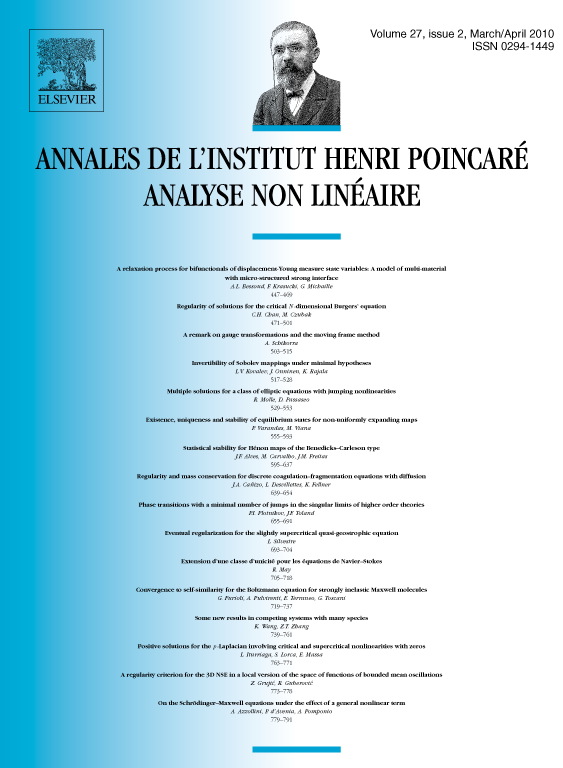A remark on gauge transformations and the moving frame method
Armin Schikorra
RWTH Aachen University, Institut für Mathematik, Templergraben 55, 52062 Aachen, Germany

Abstract
In this note we give a shorter proof of recent regularity results on elliptic partial differential equations with antisymmetric structure presented in Rivière (2007) [23], Rivière and Struwe (2008) [24]. We differ from the mentioned articles in using the direct method of Hélein's moving frame, i.e. minimizing a certain variational energy-functional, in order to construct a suitable gauge transformation. Though this is neither new nor surprising, it enables us to describe a proof of regularity using elementary arguments of calculus of variations and algebraic identities.
Moreover, we remark that in order to prove Hildebrandt's conjecture on regularity of critical points of 2D-conformally invariant variational problems one can avoid the application of the Nash–Moser imbedding theorem.
Résumé
La note contient une démonstation plus courte des résultats récents sur la régularité des solutions d'équations aux dérivées partielles ayant une structure antisymétrique comme dans Rivière (2007) [23], Rivière and Struwe (2008) [24]. La différence par rapport méthodes dans ces articles est qu'on utilise directement les « répères mobiles » developpés par Hélein, c'est – à – dire la minimisation d'une énergie variationnelle, dans la but de construire une transformation de Jauge. Même si ce n'est ni nouveau ni étonnant, ceci nous permet de mener une démonstration de régularité par des arguments élémentaires du calcul variationnel et des identités algébriques.
De plus, nous remarquons que la conjecture d'Hildebrandt, concernant la regularité des points critiques des problèmes variationnels invariants sous des transformations conformes, ne nécessite pas l'application du théorème dimmersion de Nash et Moser.
Cite this article
Armin Schikorra, A remark on gauge transformations and the moving frame method. Ann. Inst. H. Poincaré Anal. Non Linéaire 27 (2010), no. 2, pp. 503–515
DOI 10.1016/J.ANIHPC.2009.09.004